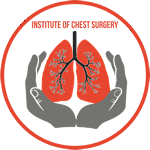Tracheoesophageal fistula (TEF) is a rare but potentially life-threatening congenital condition that occurs during fetal development. In this condition, an abnormal connection forms between the trachea (windpipe) and the esophagus (food pipe), leading to various respiratory, feeding, and gastrointestinal issues. Traditionally, surgical intervention has been the primary approach for treating TEF. However, with advancements in medical knowledge and technology, there is a growing interest in exploring non-surgical treatment options. This article aims to explore the question: Can Tracheoesophageal Fistula be treated without surgery?
Understanding Tracheoesophageal Fistula
Before delving into treatment options, it is essential to understand the nature of tracheoesophageal fistula. TEF is a congenital anomaly, meaning it is present at birth. During fetal development, the trachea and esophagus should develop separately, but in some cases, they fail to do so, resulting in the formation of an abnormal connection between the two structures.
This abnormal connection gives rise to several complications:
- Respiratory Problems: The abnormal connection allows air to pass from the trachea to the esophagus and vice versa, leading to breathing difficulties, choking, coughing, and an increased risk of respiratory infections.
- Feeding Difficulties: Liquids and food can pass through the abnormal connection, leading to aspiration pneumonia, difficulty in feeding, and malnutrition.
- Gastrointestinal Issues: The backflow of stomach acids into the trachea can cause irritation and inflammation, leading to gastroesophageal reflux disease (GERD).
Traditional Surgical Treatment
For decades, surgery has been the standard treatment for tracheoesophageal fistula, particularly in infants born with this condition. The main goal of surgery is to repair the abnormal connection and restore the normal anatomy of the trachea and esophagus. Surgery is usually performed soon after birth to minimize complications and ensure proper development and growth of the child.
The surgical procedure involves making an incision in the chest or neck to access the abnormal connection. The surgeon then repairs the esophageal defect and reconstructs the trachea if necessary. This delicate procedure requires the expertise of skilled pediatric surgeons who specialize in congenital anomalies. Although surgical treatment has shown significant success, it is an invasive procedure that comes with inherent risks, and post-operative care is vital for a successful recovery.
Non-Surgical Treatment Options
As medical science continues to advance, non-surgical treatment options have emerged as potential alternatives for certain cases of tracheoesophageal fistula. While these treatments may not be curative, they can provide supportive care and symptom relief.
- Endoscopic Management: Endoscopy, a minimally invasive procedure, has opened new possibilities in managing TEF. Using an endoscope – a flexible tube with a camera on its tip – medical professionals can access the airway and esophagus. Through the endoscope, they can place stents or plugs to temporarily block the fistula, allowing time for spontaneous healing in some cases. Endoscopic procedures carry less risk and result in faster recovery compared to traditional surgery.
- Feeding Modifications: For infants born with TEF, feeding difficulties are a primary concern. Non-surgical interventions may involve changing feeding positions, using specialized nipples or bottles, and thickening feeds to reduce the risk of aspiration. Pediatric gastroenterologists or speech and language therapists can provide guidance on appropriate feeding techniques to ensure optimal nutrition and growth.
- Medical Management: In cases where TEF is associated with certain medical conditions, such as inflammation or infection, targeted medical treatments may be employed. Medications to reduce acid reflux or treat respiratory infections can help manage symptoms and prevent complications.
Limitations of Non-Surgical Treatments
While non-surgical treatment options offer promise, they do have limitations. Non-surgical treatments may not address the underlying cause of the fistula and may only provide temporary relief. Additionally, not all types of tracheoesophageal fistula may be amenable to non-surgical management, and the effectiveness of these approaches can vary from case to case.
Conclusion
Tracheoesophageal fistula is a complex congenital condition that requires careful evaluation and appropriate management. While surgery remains the gold standard for treatment, non-surgical options can play a valuable role, especially in select cases where immediate surgical intervention may not be feasible or advisable. Endoscopic management, feeding modifications, and medical treatments offer supportive care and symptom relief.
The decision to pursue surgical or non-surgical treatments should be individualized, taking into account the patient’s specific condition, overall health, and potential risks and benefits. Qualified medical professionals, including pediatric surgeons and specialists, should be consulted to determine the most suitable treatment approach for each case.
As medical research continues to progress, we may see further advancements in non-surgical treatments for tracheoesophageal fistula, providing more options and improved outcomes for affected individuals in the future.







